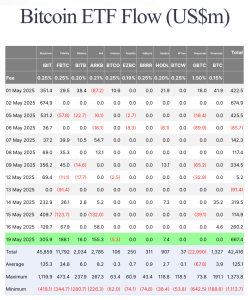
The so-called crypto winter shows no sign of ending, yet Blockchain technology is gaining a foothold in Italy, thanks in part to the projects of the Politecnico di Milano.
The Bel Paese boasts 278 projects with a 13% boom this year and nearly 14 million Italians who have already put a foot in this world having already bought cryptocurrencies or are in the process of doing so.
Politecnico di Milano’s School of Management, which was founded 20 years ago, sheds new light on the state of Blockchain technology adoption in Italy and the crypto world in general in the country.
This year’s research by the Blockchain and Distributed Ledger Observatory of the Politecnico di Milano was carried out in collaboration with several companies from the Italian banking world and beyond.
Decentralized Web3 seems to be making its way by doubling the number of projects since a year ago (111 vs. 2033 worldwide).
The Italian market is growing, reaching €42 million in investments (+50% since last year).
Despite the various debacles in the crypto world in 2022, which undermined investor confidence, IoV (Internet of Value) apps are growing, but so are stablecoins and CBDCs (100 projects or 28% of growth), as well as many NFT initiatives.
Of the €42 million investments, 33% also involve the finance and insurance sector, 23% fashion, 10% automotive and 7% public administration.
The research, presented during the “Blockchain & Web3: time to build” conference, was followed by a speech by the director of the Blockchain and Distributed Ledger observatory, Valeria Portale, who commented:
“2022 has been a year of extremes for the Blockchain world. Together with the dramatic bursting of some bubbles and a prolonged depreciation of all crypto-assets, the so-called cryptowinter, the consolidation of the development work begun years ago was completed, demonstrating an unprecedented technical vitality and engineering pragmatism. Today, companies are using the moment to focus on experimenting with Web3 projects, far from the media hype and more speculative mechanics. The Blockchain world is entering a new phase: the hype is over, the time to build has begun.”
Francesco Bruschi of the same observatory adds:
“2022 was marked by a remarkable development of Blockchain platforms with a focus on increasing scalability and reducing energy consumption. Ethereum has changed, reducing consumption in the validation process. BNB Chain, the main Blockchain by number of DApps and active users, has created a real operating standard based on solutions with low fees, but less decentralized, and by promoting the development of DApps often copied from other platforms, heavily funding developers. Among the most interesting applications, we note the introduction by “classic” platforms such as Instagram of tokens in their worlds and crypto-assets have become an alternative to the main instruments of economic support for Ukraine, making it possible to collect tens of millions of dollars from small donors around the world.”
Internet of Value
Among the most interesting aspects are certainly Internet of Value (IoV) applications, i.e., the latest solutions in the field of value exchange (crypto, stablecoins and CBDCs).
New digital state currencies are being considered by governments and Central Banks around the world, and Europe and Italy are no exception.
Worldwide 59 central banks out of the top 100 are studying a CBDC project for the country, the digital Euro for example has been under study for more than two years and will act as a driver for future regulation of the industry.
Politecnico di Milano: Blockchain for business
In this area, banks, insurance companies, and investment funds are trying to replicate classic finance business processes by implementing Blockchain technology.
Companies design financial products by enhancing them with the security and processes that blockchain can provide.
Decentralized web
The NFT boom has also arrived in Italy, and the Politecnico di Milano confirms that it is increasingly common for these tokens to be used to implement access to special services or the use of the Metaverse.
In fashion and luxury this trend is very much felt and there are many phygital or digital projects that envisage new successful strategies around the NFT (Non Fungible Token) world.
DApps, DAOs and distributed governance systems on Blockchain are more and more studied by Italian companies but hardly catch on except in projects that are already born with this idea of participatory governance.
Politecnico di Milano: crypto and blockchain in Italy
Cryptocurrencies are becoming increasingly popular in the country with 14 million Italians already owning them and saying they want to expand into this world in the future.
The most widely used tools are as assumed exchanges despite the recent failure of FTX.
Italians choose trading platforms in 40% of cases but also come into possession of crypto through ATMs in 19% of cases and through wallets for 18%.
However, half of Italians still believe it is safer to get a foot in the crypto world through home banking services provided by traditional banks despite the fact that they often rely on existing exchanges or base their digital currency trading platforms on platforms designed in collaboration with industry exchanges.
According to Politecnico di Milano reports, custodial wallets remain widespread in the country, the most widely used of which are Coinbase, Crypto.com and Binance.
NFTs are held by 9% of Italians according to the research while 14% say they would like to buy some in the near future especially if they are linked to digital artworks, whether avatars or figurine-style collectibles.




















